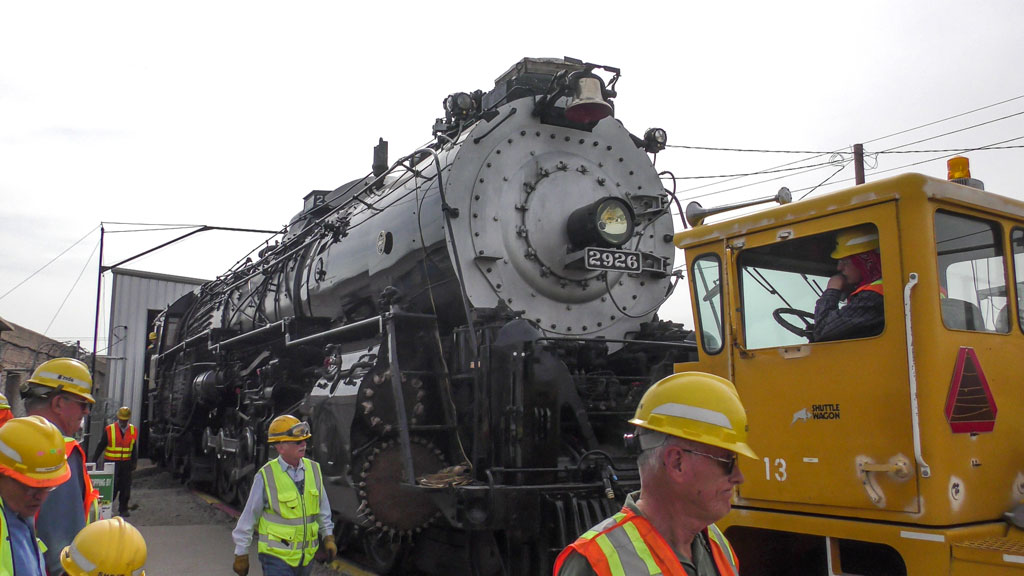The last time Baldwin-built No. 2926 rolled down the rails in 1954, it was equipped with Automatic Train Stop, which applied the brakes on the train in the event that an engineer went through anything but a green clear signal. PTC is more sophisticated in that the train receives information about its location and where it is allowed to safely travel. PTC systems work in either dark or signaled territory, and use GPS navigation to track train movements. FRA rules require that the lead locomotive be equipped with PTC, but integration with a steam locomotive is difficult.
“We have a member by the name of John Howard, who is also a member of AT&SF [4-8-4] 3751 in San Bernardino [Calif.],” says Jon Spargo, a member of the New Mexico Steam Locomotive and Railroad Historical Society. “John is working on a system that will allow the trailing diesel engine to react to PTC. Basically, we’re going to have an MU [multiple-unit] box on the brake stand in the cab. We will be able to control the helper diesel from the cab, including dynamic braking.”
Much of northern New Mexico, along the route of Amtrak’s Southwest Chief, has been granted a temporary PTC wavier because of the lack of traffic on the line. Las Vegas, N.M., is in this territory and is a perfect destination for 2926 excursions. But if 2926 is used for excursions to Winslow, Ariz., for example, it must be equipped with PTC to operate on the BNSF Railway Southern Transcon.
The John H. Emery Rail Heritage Trust was created by John Emery, a Chicago native and a lover of classic American passenger trains. In 2017, the Emery Trust gathered operators of steam locomotives and Class I railroad representatives to consider the implications of installing PTC on mainline steam locomotives. “From this meeting, the group determined that it was wholly feasible to adapt the technology to work on individual locomotives, to share technical resources and systems, and to work with the Federal Railroad Administration on implementing PTC on historic equipment,” says Kelly Lynch, vice president of the Fort Wayne Railroad Historical Society, which operates Nickel Plate 765.















Back in the 1950’s, after some rear-end collisions in Cab Signal (CSS) territory, the ICC mandated PRR install the train control feature (ATC) of CSS on passenger locomotives. [Note: ATSF/BNSF uses the intermittent inductive train stop (ATS) system, a different technology]
The ATC function compares the train speed with the speed authorized by the cab signals, sounds a warning if the train speed is excessive and, if the engineer does not make a brake set, stops the train. PRR was still using K4s locomotives in Cab Signal territory, including the NEC, NY&LB and PRSL, and ATC was installed on some of them. On a diesel or electric motor, the penalty application will shut off power, but on a K4s (I don’t think it was installed on any other class) it could only make the penalty brake application, unable to affect the completely mechanical throttle.
CSS/ATC is an integral part of Amtrak’s CSS/ACSES PTC system.
I’ve asked this question a few times, without a response. How would a PTC installation shut off the throttle of a steam loco? Even with brakes applied by PTC, if the loco is still pulling the effect is certainly diminished.